PRE-RELEASE
INSPECTION
| INSPECTION |
Check the connected and fixed condition of connector.
Check specifications of the mark with ABSCM&H/U.
|
Mark
|
Model
|
|
ME
|
AT
|
|
MH
|
MT
|
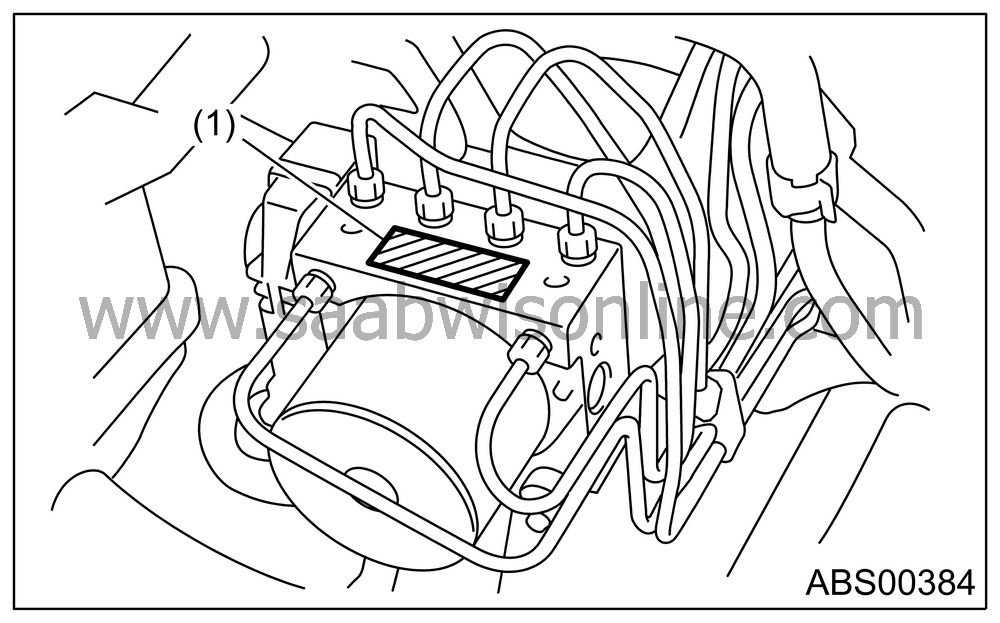
|
(1)
|
Mark
|
| CHECKING THE HYDRAULIC UNIT ABS OPERATION BY PRESSURE GAUGE |
Lift-up the vehicle and remove the wheels.
Disconnect the air bleeder screws from the FL and FR caliper bodies.
Connect two pressure gauges to the FL and FR caliper bodies.
| Important | ||
| • |
Pressure gauges used exclusively
for brake fluid must be used.
|
|
| • |
Do not employ pressure gauge previously used for transmission
oil pressure since the piston seal is expanded which may lead to
malfunction of the brake.
|
|
| Note | ||
|
Wrap sealing tape around the pressure gauge. |
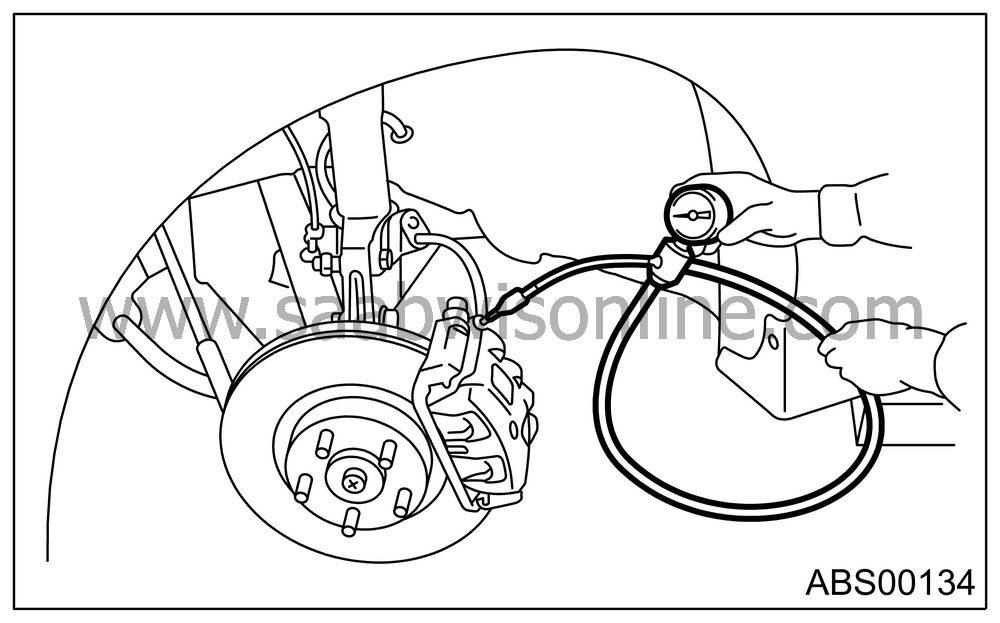
Bleed air from the pressure gauges.
Perform the ABS sequence control.

When the hydraulic unit begins to work and first the FL side performs decompression, holding and compression, and then the FR side performs decompression, holding and compression.
Read values indicated on the pressure gauge and check if the fluctuation of the values between decompression and compression meets the standard values. Also check if any irregular brake pedal tightness is felt.
|
Front
wheel
|
Rear
wheel
|
|
|
Initial
value
|
3,500
kPa
(35 kgf/cm 2 , 498 psi) |
3,500
kPa
(35 kgf/cm 2 , 498 psi) |
|
Decompressed
|
500
kPa
(5 kgf/cm 2 , 71 psi) or less |
500
kPa
(5 kgf/cm 2 , 71 psi) or less |
|
Compressed
|
3,500
kPa
(35 kgf/cm 2 , 498 psi) or more |
3,500
kPa
(35 kgf/cm 2 , 498 psi) or more |
Remove the pressure gauges from FL and FR caliper bodies.
Remove the air bleeder screws from the RL and RR caliper bodies.
Connect the air bleeder screws to the FL and FR caliper bodies.
Connect two pressure gauges to the RL and RR caliper bodies.
Bleed air from the FL and FR caliper bodies.
Perform the ABS sequence control.

When the hydraulic unit begins to work, at first the RR side performs decompression, holding and compression, and then the RL side performs decompression, holding and compression.
Read values indicated on the pressure gauges and check if they meet the standard value.
After checking, remove the pressure gauges from caliper bodies.
Connect the air bleeder screws to RL and RR caliper bodies.
Bleed air from the brake system.
| CHECKING THE HYDRAULIC UNIT ABS OPERATION WITH BRAKE TESTER |
In the case of non-Saab 9-2X 2.0T Aero AT model, install a spare fuse with the FWD connector in the main fuse box to simulate FWD model.
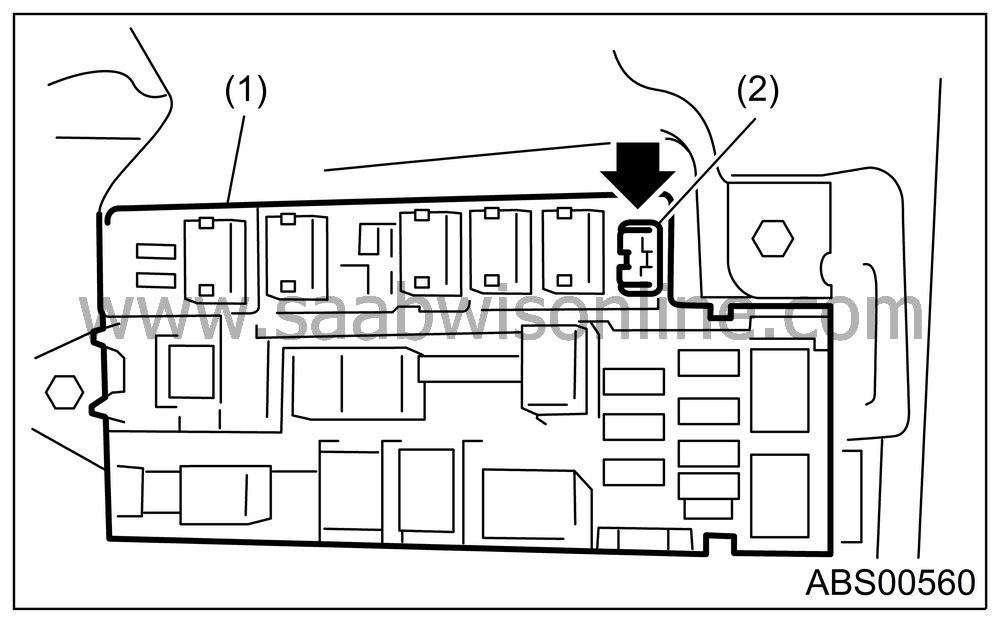
|
(1)
|
Main fuse
box
|
|
(2)
|
FWD connector
|
| Note | ||
|
The AWD circuit of MT and Saab 9-2X 2.0T Aero AT model can not be disabled. |
Prepare for operating the ABS sequence control.

Set the front wheels or rear wheels on the brake tester and set the select lever’s position at “N” range.
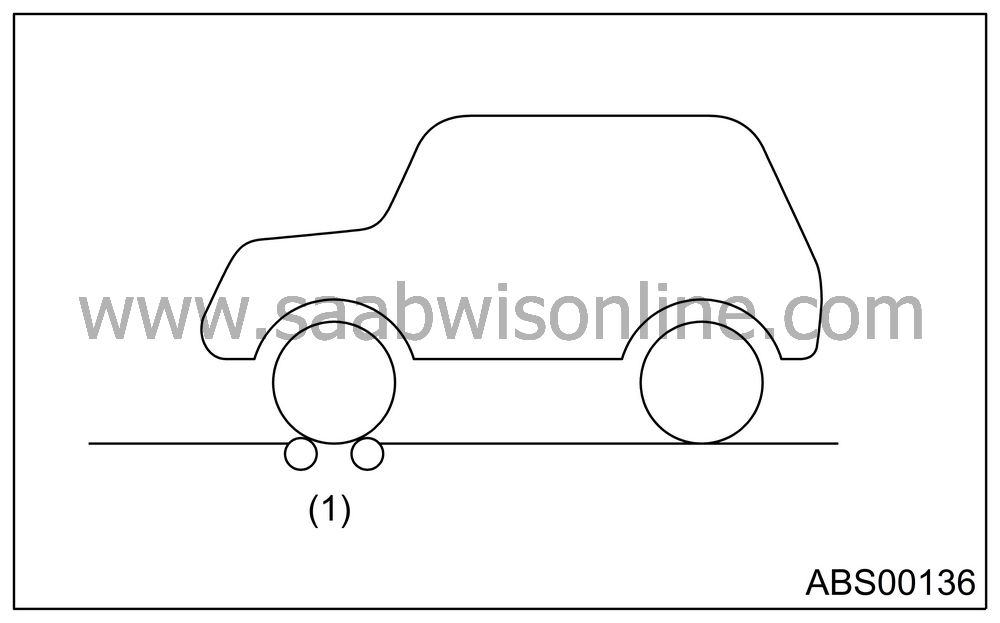
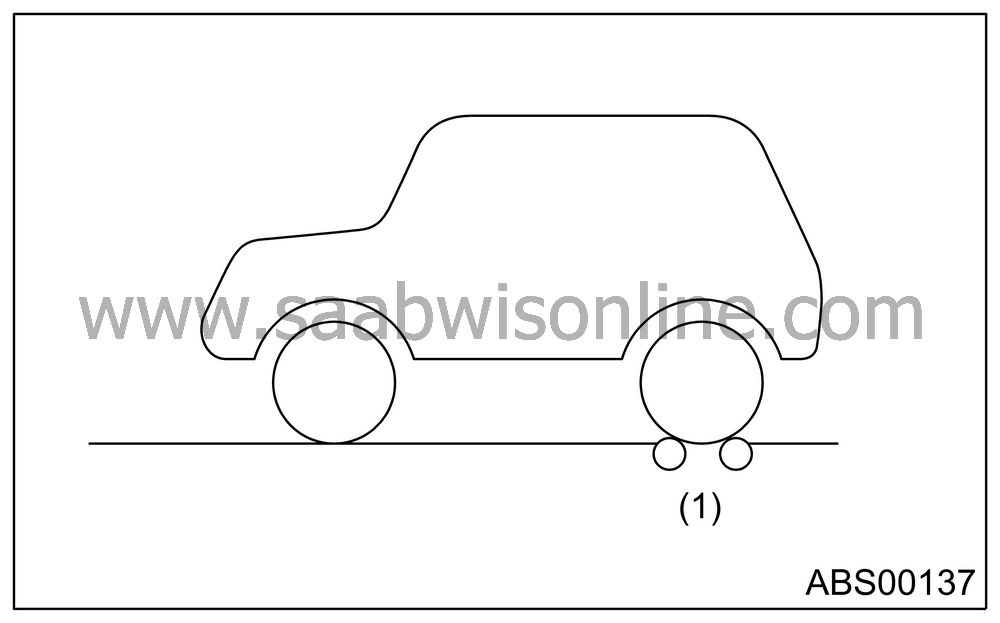
|
(1)
|
Brake tester
|
Operate the brake tester.
Perform the ABS sequence control.

Hydraulic unit begins to work; and check the following working sequence.
The FL side performs decompression, holding and compression in sequence, and subsequently the FR side repeats the cycle.
The RR side performs decompression, holding and compression in sequence, and subsequently the RL side repeats the cycle.
Read values indicated on the brake tester and check if the fluctuation of values, while decompressed and compressed, meet the standard values.
|
Front
wheel
|
Rear
wheel
|
|
|
Initial
value
|
1,000
N
(100 kgf, 221 lb) |
1,000
N
(100 kgf, 221 lb) |
|
Decompressed
|
500
N
(50 kgf, 110 lb) or less |
500
N
(50 kgf, 110 lb) or less |
|
Compressed
|
1,000
N
(100 kgf, 221 lb) or more |
1,000
N
(100 kgf, 221 lb) or more |
After checking, also check if any irregular brake pedal tightness is felt.


